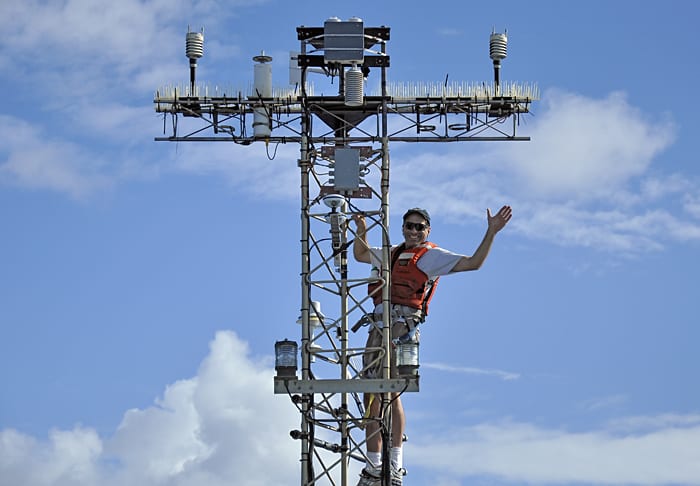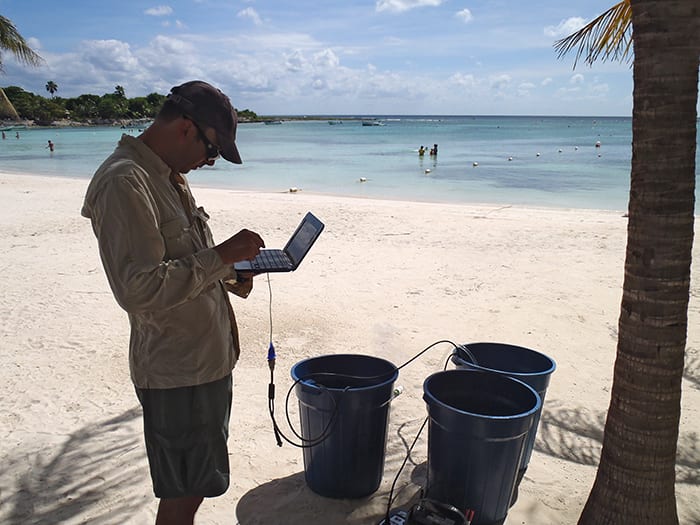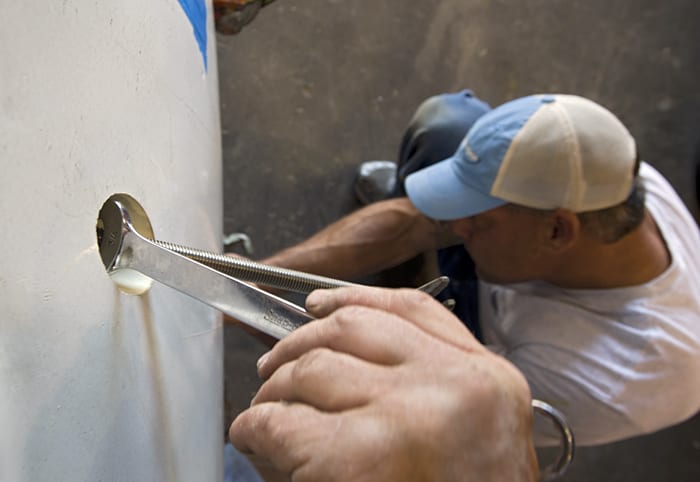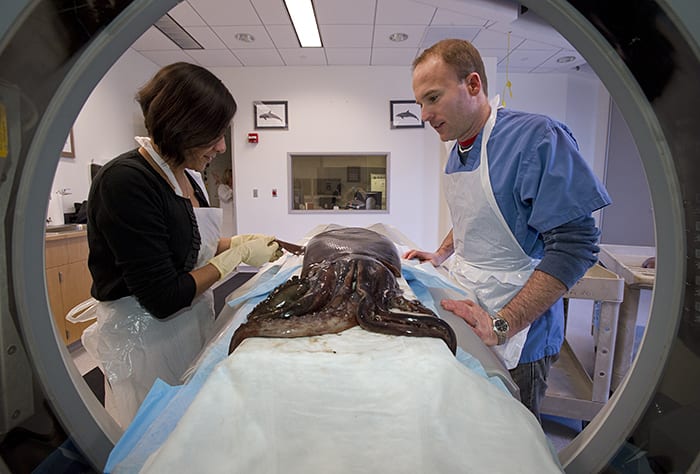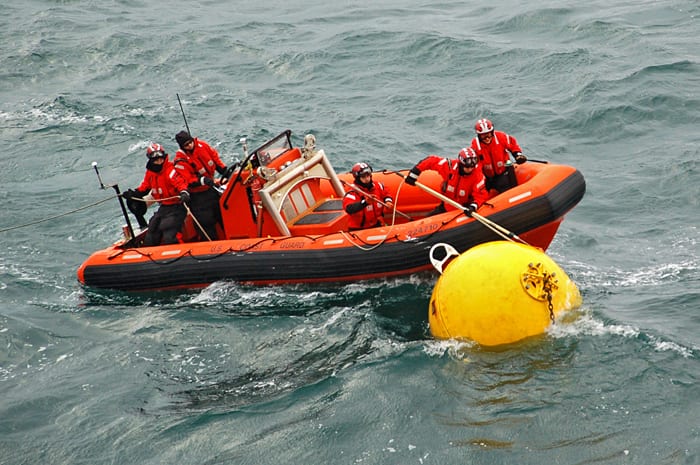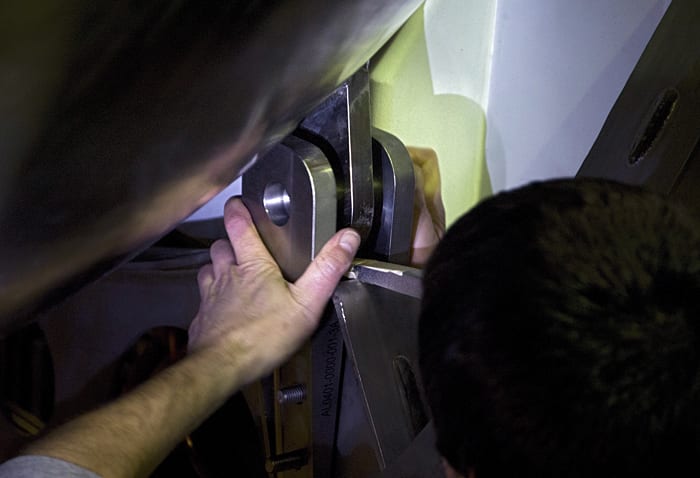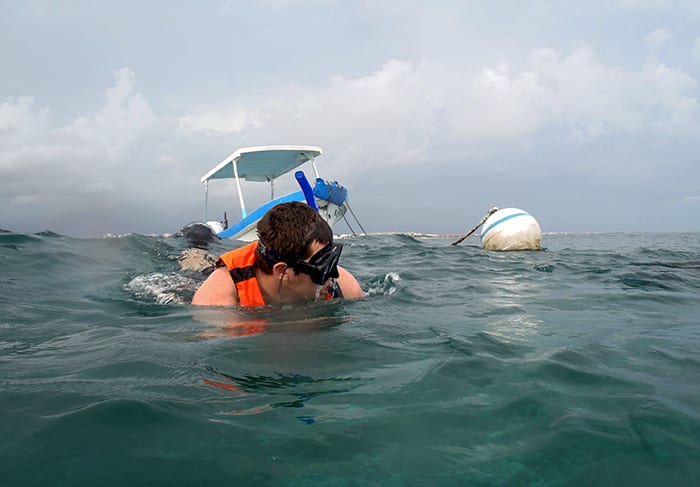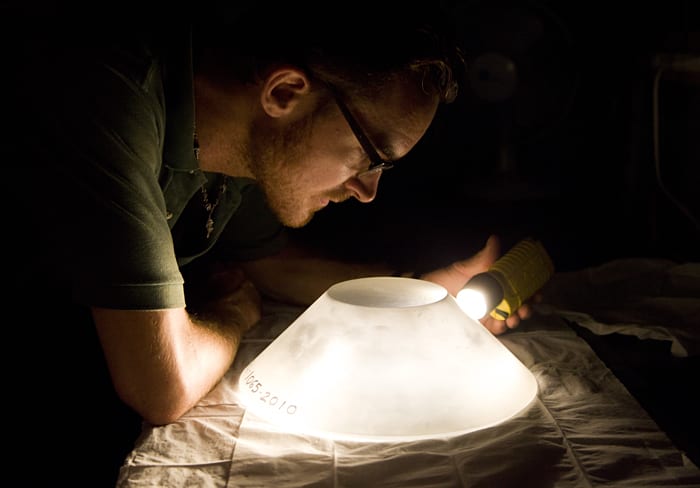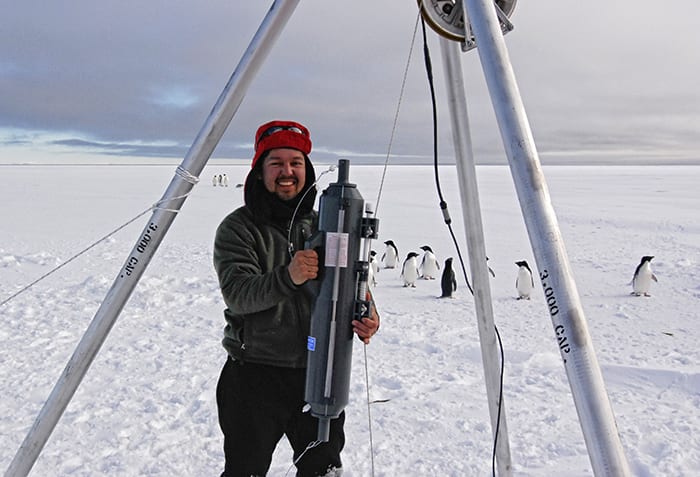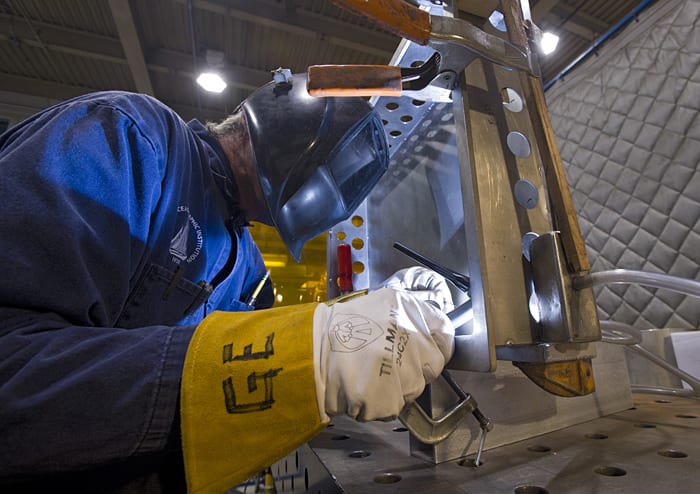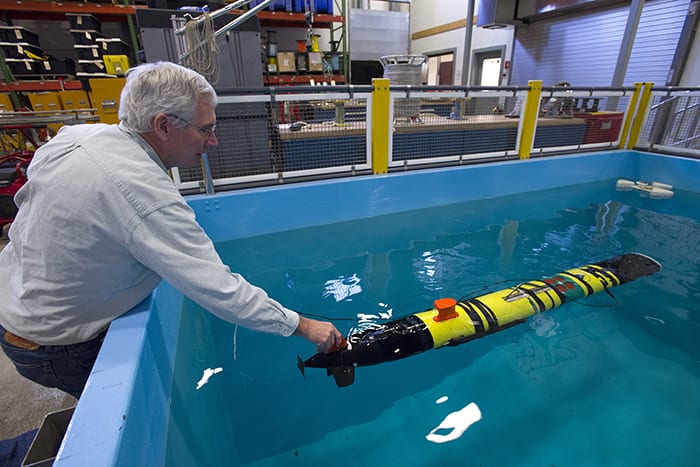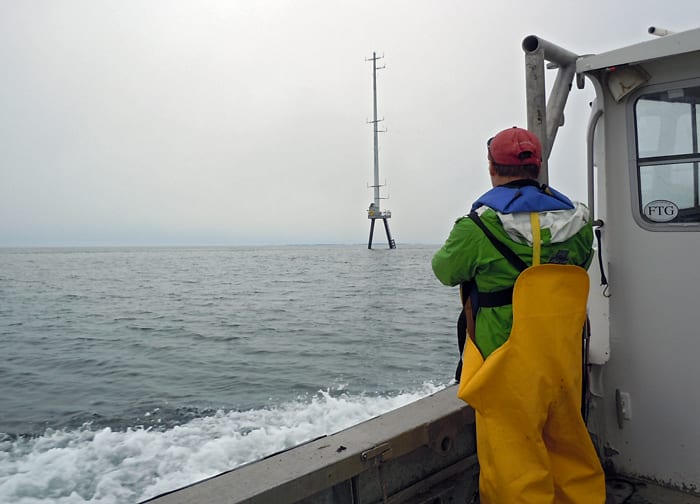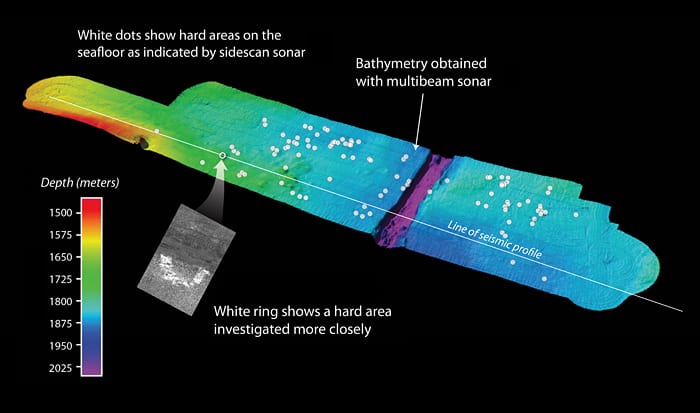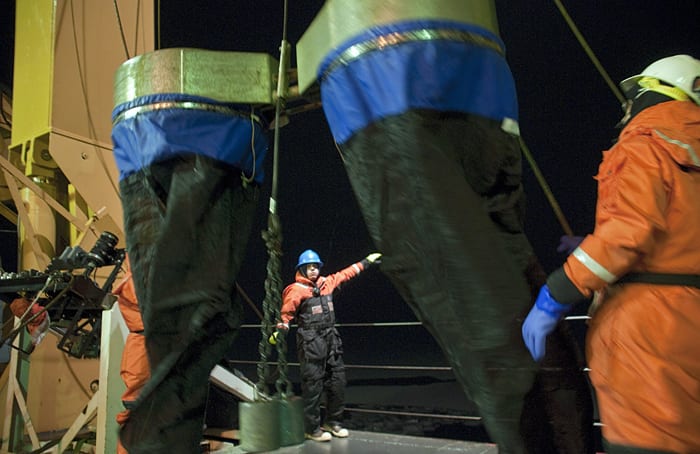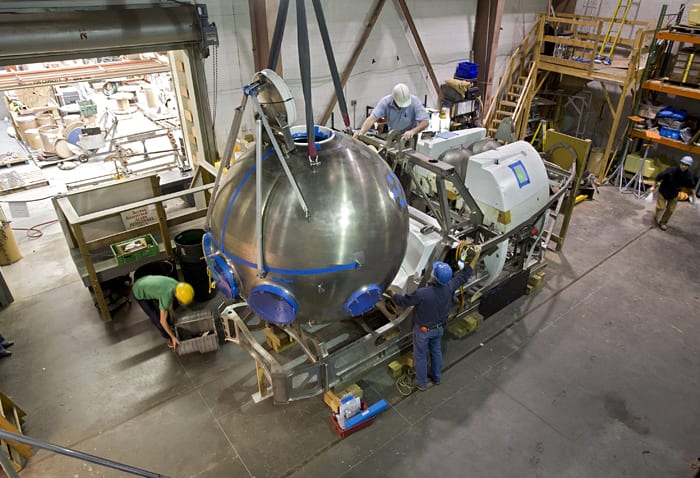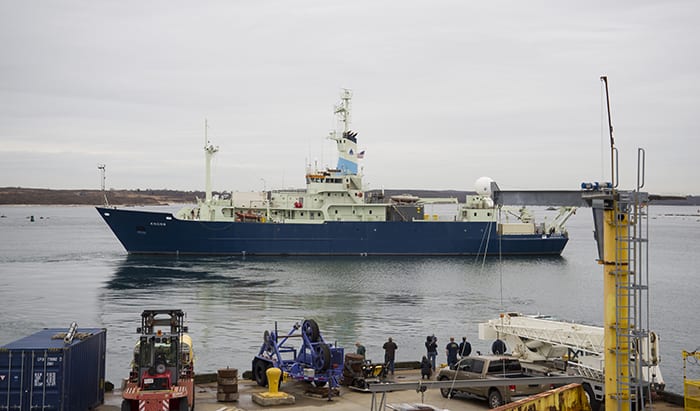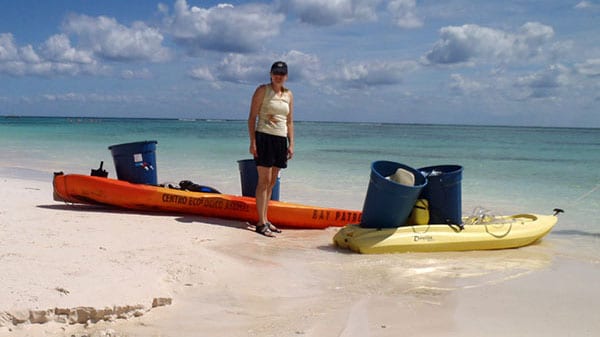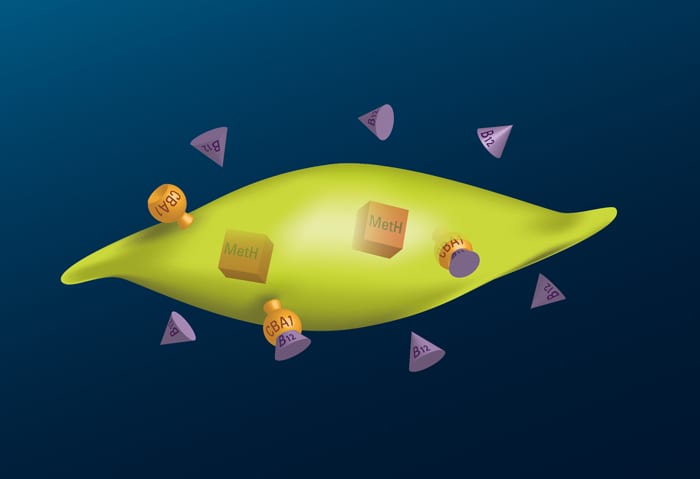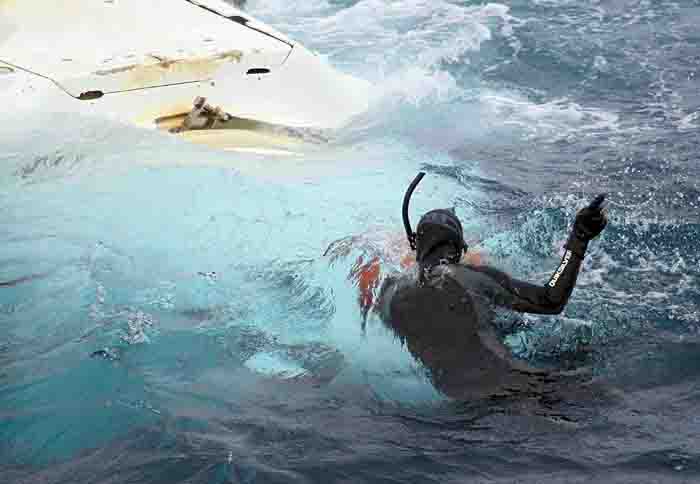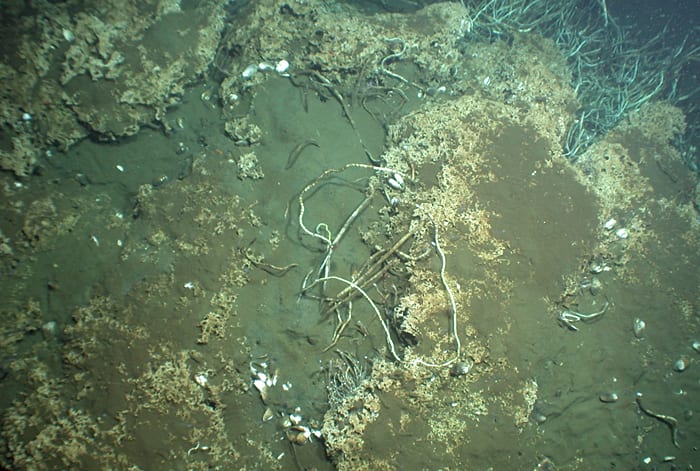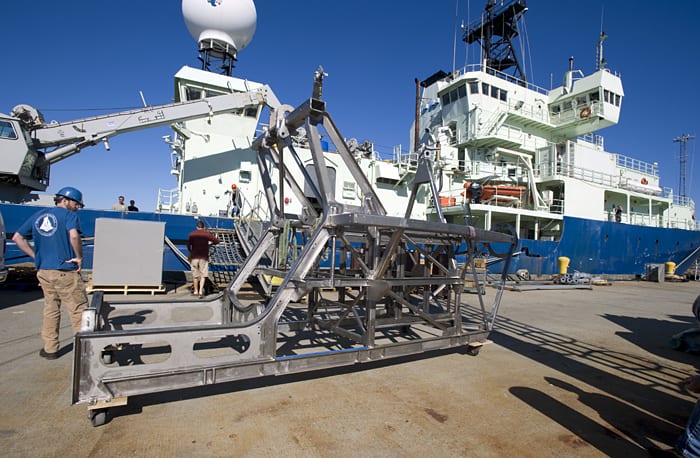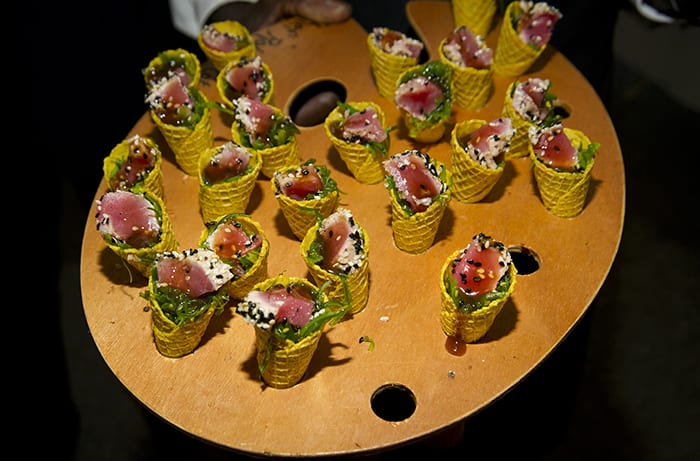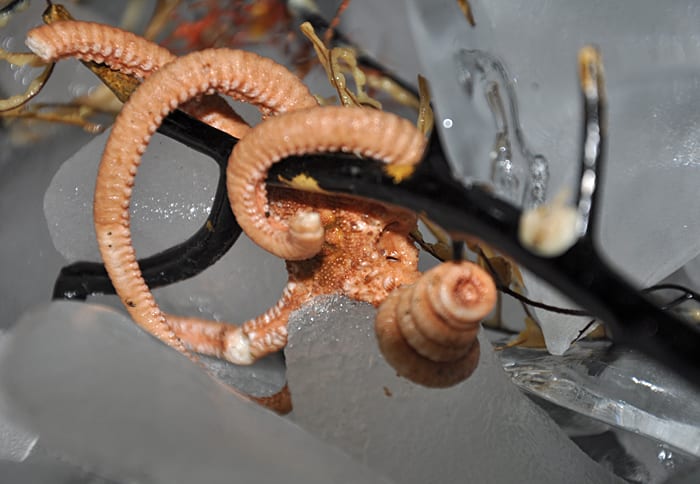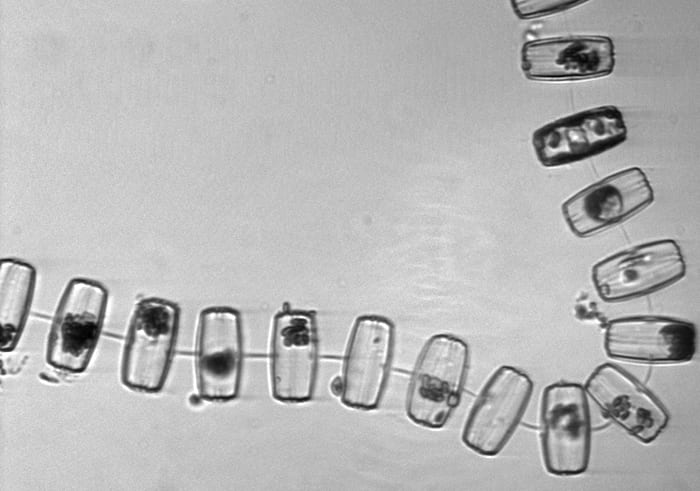Multimedia Items
High Wire Act
Steve Faluotico of WHOI’s Applied Ocean Physics and Engineering Department cleans a sensor on the meteorological mast on R/V Knorr during the September 2012 SPURS cruise to study how salt content fluctuates…
Read MoreTracking the Flow
WHOI scientist Matt Charette and his students travel around the world studying groundwater flow to the ocean from various types of aquifers. Here, he checks the salinity of groundwater samples…
Read MoreKeeping Alvin Afloat
Syntactic foam, show here being mounted on the new Alvin human-occupied vehicle, helps make marine submersibles buoyant, even at great depth. The foam is made up of small balloons of…
Read MoreSquid Scan
WHOI biologist Aran Mooney and Dr. Iliana Ruiz-Cooley, a postdoctoral scientist at the NOAA-National Marine Fisheries Service Southwest regional office, examined a Humboldt squid before scanning its sensory structures at…
Read MoreA Day at the Office
In October 2012, crew members from the U.S. Coast Guard ice breaker Healy deployed a small boat to recover a mooring from the Beaufort Sea. The mooring was deployed by…
Read MoreTab A into Slot B
WHOI mechanic Brian Durante assembles a “clevis attachment,” one of four on the new titanium frame of the human occupied vehicle Alvin that connect the bottom lugs of the personnel…
Read MoreCoral Reconnaissance
Paul Henderson, a researcher in WHOI’s Coastal Groundwater Geochemistry Lab, snorkels near the Yucatan Peninsula to look for large corals for a study of groundwater flow. Because the Yucatan is…
Read MoreThe Better to See With
WHOI technician Jefferson Grau inspects a new Alvin viewport (window) to make sure it doesn’t contain bubbles or inclusions such as bits of dirt, which could cause the viewport to…
Read MoreMarine Microbes
WHOI biogeochemist Mak Saito prepares to drill through six feet of ice to take a water sample during 2009 fieldwork in Antarctica that he later analyzed for dissolved metals. Saito…
Read MoreDoing It Right
Senior welder Geoffrey Ekblaw welds a seam on a titanium main junction box for the new Alvin. The human-occupied research submersible is undergoing a comprehensive upgrade, including a new frame…
Read MoreA Hull of a REMUS
Senior engineer Ben Allen recently tested a specially equipped REMUS 100 autonomous underwater vehicle (AUV) in the test pool at the Rinehart Coastal Research Center. This particular vehicle is designed to…
Read MoreSounds of the Sound
Aran Mooney looks out across gray Nantucket Sound towards a tower built to monitor meteorological conditions where the company Cape Wind plans to install energy-generating wind turbines. WHOI biologists Mooney…
Read MoreDeep-sea Detectives
In 2010, WHOI scientists Adam Soule and Dan Lizarralde searched for evidence that magma from below the seafloor had penetrated up into the sediments of the Guaymas Basin in the…
Read MoreBongo Dip
Marine science technician Marshal Chaidez signals to a crewmate running a winch from a control room overlooking the fantail of the U.S. Coast Guard icebreaker Healy to deploy a set of…
Read MoreAlvin Takes Shape
With the installation of Alvin‘s new personnel sphere onto its modified titanium frame, shown here being attached in November 2012, the country’s only deep-diving submersible began to regain its familiar…
Read MoreCape to Cape
On Tuesday, January 15, R/V Knorr left Cape Cod for a 26-day transit to Cape Town, South Africa. From there, it will conduct science missions out of Cape Town; Montevideo,…
Read MoreGroundwater: The River No One Sees
By Martin Burch :: Originally published online January 16, 2013
Read MoreThe B12 Claw
WHOI scientists recently discovered a previously unknown piece of metabolic machinery that allows algae to grow in the ocean. The cobalamin acquisition protein 1 (CBA1) grabs vitamin B12 out of…
Read MoreReel It In
At the end of an Alvin dive, the deep-diving submersible needs some help returning to the deck of its support ship, R/V Atlantis. To get its 35,000 pounds out of the water…
Read MoreNow You’re Cooking
WHOI scientists Adam Soule, Dan Lizarralde, and Jeff Seewald used a device developed by WHOI engineer Marshall Swartz to gather high-resolution images of seafloor organisms in the Gulf of California…
Read MoreFramed
In September, WHOI took delivery of a very important piece of equipment: the frame for the redesigned and upgraded submersible Alvin. Shown here next to Alvin‘s support ship, R/V Atlantis, the frame had…
Read MoreHold the Cesium
After the earthquake and nuclear release in northeast Japan, many people have begun looking at foods like this tuna appetizer in a very different way. WHOI chemist Ken Buesseler spent…
Read MoreStar on Ice
A brittle star clings to a thin stalk of coral amid chunks of ice on the Indonesian research vessel Beruna Jaya IV. It was collected during a 2010 cruise to…
Read MoreShells of Their Former Cells
In July 2011, scientists studying the Arctic discovered a massive phytoplankton bloom under meter-thick ice, where they thought there wouldn’t be enough light for the plants to grow. WHOI biologist…
Read More
